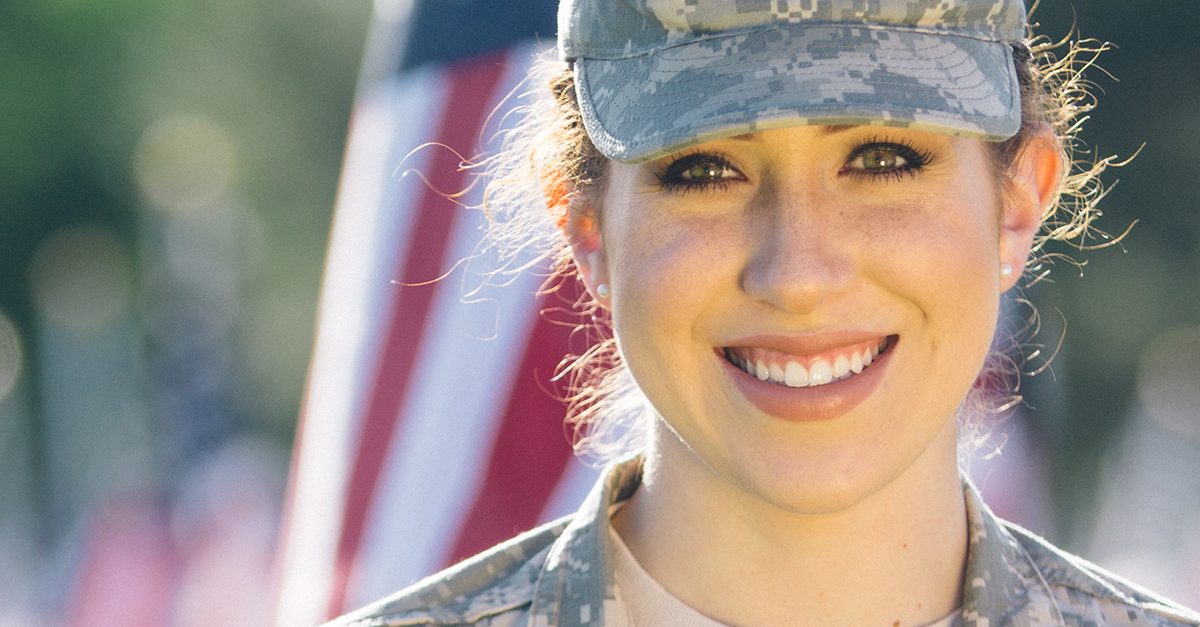Hospitality brands know a good thing when they see it, and military programs are a good thing. The military segment has $1 trillion in spending power and takes three times more vacations. Providing exclusive offers to the military community is a powerful way to attract loyal customers and differentiate a brand – nothing generates goodwill like honoring service members and the families who support them.
Two military programs that stand out are T-Mobile ONE™ Military program and the Sprint Works program. These companies go above and beyond the typical military discount by investing in infrastructure around military communities, providing career support to military spouses and veterans, and more.
While many hospitality companies have a military discount program, few go this far, and many are designed in ways that inherently limit their success.
Is Your Military Program Set Up for Success?
The biggest problem with most military programs is that their verification process isn’t user-friendly.
Most military programs require customers to show an ID, such as a Common Access Card, but military customers can be reluctant to share it because it contains sensitive data such as blood type. And companies who want to extend the program to family members can ask for a Uniformed Services ID Card, but there’s no guarantee they’ll have one.
Asking employees to verify service members can complicate things further. If employees aren’t trained or prepared to identify all valid – and fraudulent – forms of ID, their exchanges with customers can be time-consuming, frustrating, and possibly even embarrassing.
Further, relying on a third-party sources like Veterans Advantage also has limitations. While it’s a widely accepted channel for confirming military status, service members have to pay for it, which can be an obstacle that prevents them from redeeming your offer. Because of this, Veterans Advantage only reaches a few million members — a small slice of the military community that is 37 million strong.

Differentiation with Veterans Advantage is also difficult. Your participation is no different than every other brand in the program, and most brands offer small discounts, which aren’t very compelling.
But perhaps the greatest limitation of using Veterans Advantage is that it locks you out of having a direct relationship with the consumer. They’re role as a middleman prevents you from having any control over the customer experience, which undercuts your ability to endear customers to your brand. And more importantly, Veterans Advantage owns the customer data, not you, which makes it difficult to engage service members with programs that inspire long-term loyalty.
Lowe’s is a Role Model for Marketing to the Military
Like T-Mobile and Sprint, Lowe’s has a commitment to the military community that runs deep. The company’s founders were veterans of World War II, and in 2010, the company launched a discount program to honor its military customers.
Initially, verification was handled manually by employees at point of sale, which complicated the process for both customers and sales associates. Veterans were asked to share their DD 214 document, which contains their social security number and other personally identifiable information (PII) that consumers are reluctant to share.
Lowe’s overhauled their exclusive offer program by implementing a digital verification solution that doesn’t require the customer to show ID to prove eligibility. The resulting verification process:
- Was instant and secure.
- Could happen online or at point of sale.
- Required only a minimal amount of PII.
- Only needed to occur once.
This streamlined and secure process enabled Lowe’s to expand the program by offering the discount not only during military holidays, but year round. And it removed the burden on the sales associate and spared the company the risk of having to store excessive PII, which added tremendous value.
But the greatest win was the ability it gave Lowe’s to tie the discount to their loyalty program and focus on providing their customers with excellent service. Instant verification without the need to reverify is a much more satisfying customer experience. And the data Lowe’s received allowed them to truly nurture their military shoppers.
That’s exactly what Lowe’s did. They created web pages that had a military theme, began offering members exclusive incentives like GE light bulbs and Kingsford charcoal, and started engaging military shoppers with personalized buyers journeys that reflected their shopping interests and experiences.
According to Ryan Fagan, Lowe’s Director of Sales and Operations Planning, all of these changes have dramatically increased customer acquisition, engagement and loyalty.
“While we had expected these campaigns to drive greater awareness for our brand, the engagement rate on them is 2-3x higher than other campaigns we are running,” Ryan said. “However, the biggest surprise has been the way in which gated offers have helped us to acquire new customers. As a retailer, you have to make a compelling case for why a consumer should shop with you, and based on the results we’ve seen, these exclusive offers have exceeded our expectations.”

Applying Military Verification to Hospitality Loyalty Programs
For those in the travel industry – from airlines and car rental agencies, to hotels and resorts – integrating digital verification into your loyalty program can deliver the same level of success. It’s all about having a direct relationship with your customers that drives a memorable experience, and brings you tremendous benefits.
- Differentiation. Providing military customers an outstanding experience helps you stand out and keeps you from becoming a commodity. Verification that’s instant and only has to happen once makes it easy for military customers to participate and removes the administrative burden from employees, which streamlines the experience even more. In an industry defined by the level of service you provide, you want your customer service teams focused on interacting with customers, not IDs.
- Personalization. Owning the customer relationship and being able to access first-party data is key to any personalization strategy. In contrast to using a middleman like Veterans Advantage, delivering gated offers with digital verification enables a direct customer relationship from the start. You own the customer data, which simplifies your ability to engage them with VIP offers and other experiences that create loyal advocates.
- Lifetime loyalty. Gated, exclusive offers create a reason for customers to go directly to your site rather than through online travel agencies (OTAs). And bypassing OTAs gives you more opportunity to fire up brand loyalty and improve margins. You can leverage the customer data to create long-term nurture programs that deliver added incentives like free drinks, baggage checks, hotel room /car upgrades, etc. Or you can simply keep in touch by providing relevant information about seasonal promotions and other events.
Best Practices for Reaching the Military Market
Once digital verification is in place, differentiate your brand further by marketing to the military like you mean it – just like T-Mobile, Sprint and Lowe’s did with their national TV ads during the World Series that left viewers feeling the brands’ commitment to the military community.
But it’s not just about spending big bucks on prime time. There are many ways to reach the military market

- On-base newspapers. Surveys commissioned by the Air Force and Army indicate that nearly 90% of active duty personnel read military newspapers, making them a valuable channel for advertising.
- Geo-targeting. Focus on geo-targeting locations where there are hubs of military activity, including Texas, California, North Carolina, Virginia and Florida, which have the highest concentrations of active duty military and veterans.
- Social media. Ninety-four percent of military members reported that they use social media, compared to 73% of civilian adults. And 72% of military members say that social media is important in helping them stay connected to deployed family members. Among social media platforms, the military community favors Facebook, Snapchat and Instagram.
- Word of mouth. The military community tends to be characterized by close-knit connections and strong bonds, making word-of-mouth marketing a powerful amplifier. In fact, 76% of members of the military say that’s how they learn about military discounts.
- Demographic preference. Recognize age differences when crafting your digital marketing strategy. For example, millennial veterans (ages 18-34) visit military websites – e.g. Military.com, Military Times, Military OneSource – three times as often as older veterans (35+).
- Online offers. Make your discount available online so that participation is convenient for those deployed or living on a more isolated base.
- Holidays. Even if you have a year-round exclusive offer, be sure to show up – big – for relevant holidays like Veterans Day, Memorial Day and Fourth of July. When your competitors start adding to the noise with their holiday promotions, you can step up your exclusive offer to make it stand out.
For more specific tactics on reaching the military market, visit our marketing to the military community web page.
Ready to Acquire a Loyal Military Following?
SheerID’s digital verification platform can help you create high-value, high-return campaigns that attract new military customers and maintain their loyalty. Gated offers with digital verification are a powerful way to honor the military and create a deeper connection with service members and all who support them.
See how SheerID’s Digital Verification Platform can drive a highly effective exclusive offer program, or contact us to learn more.







